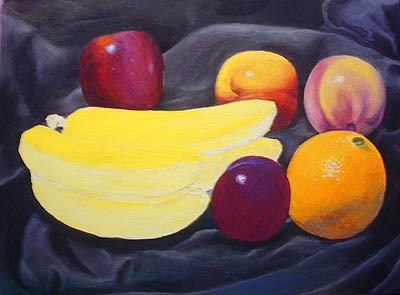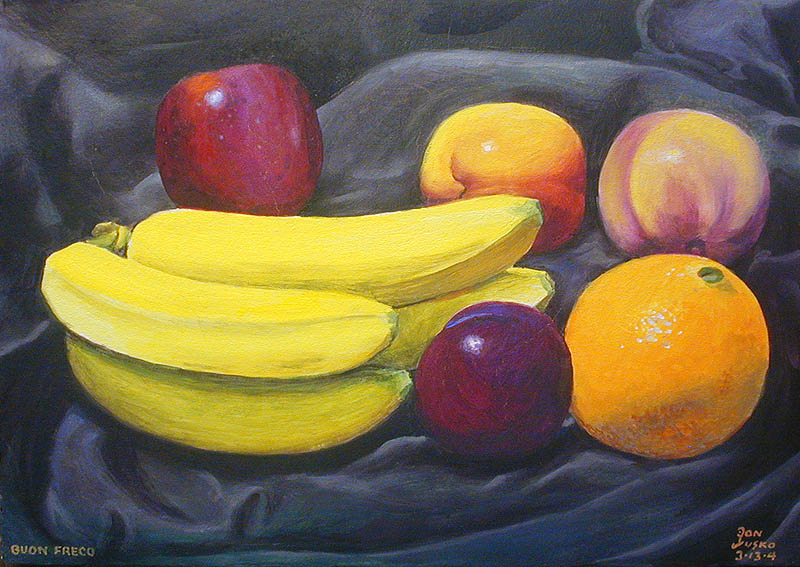Fresco Painting, #31, Page 1, IS THIS PAGE 1, #31, SCROLL DOWN.
Fresco Painting, #32, Page 2 contains;
Fresco Painting, #33, Page 3 contains;
Fresco Painting, #34, Page 4 contains;
Fresco Painting, #35, Page 5 contains;
Fresco Painting, #36, Page 6 contains;
Fresco Painting, #37, Page 7 contains;
Fresco Painting, #38, Page 8 contains;
Fresco Painting, #39, Page 9 contains;
Fresco Painting, #40, Page 10 contains;
Fresco Painting, #41, Page 11 contains;
Fresco Painting, #42, Page 12 contains;
Board Z2, intonaco on 2:00
3:00, Painting. It's slow to absorb at the start while the mortar is soft, soft enough for the softest brush to make a mark. It takes about 5 minutes for the sprayed color and shine to dissipate. As the absorption time decreases the mortar gets harder. I'm using an air brush for the background, it takes many passes. I think it would have been faster with a big brush loaded and used during the later faster absorption period. That was a first thought.. More spraying as time went on made a very nice background. 4:20, I was painting the "Bird of Paradise". Our neighbor down the street has a whole clump growing. No drawing, just painting the flower with sure strokes. By
6:15, Finished, Pigment colors: Titanium White, naples Yellow, Viridian Extra warm side, Cadmium Orange, Cobalt Blue Light, Thioindigoid Red, Thalo Blue.
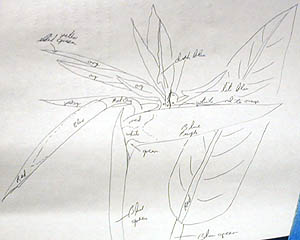 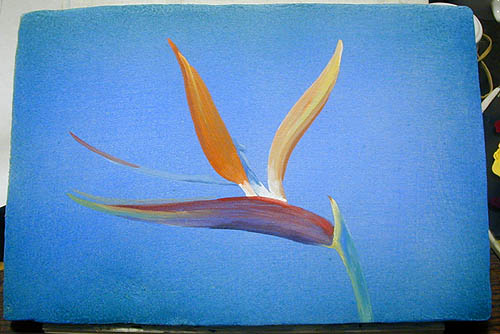 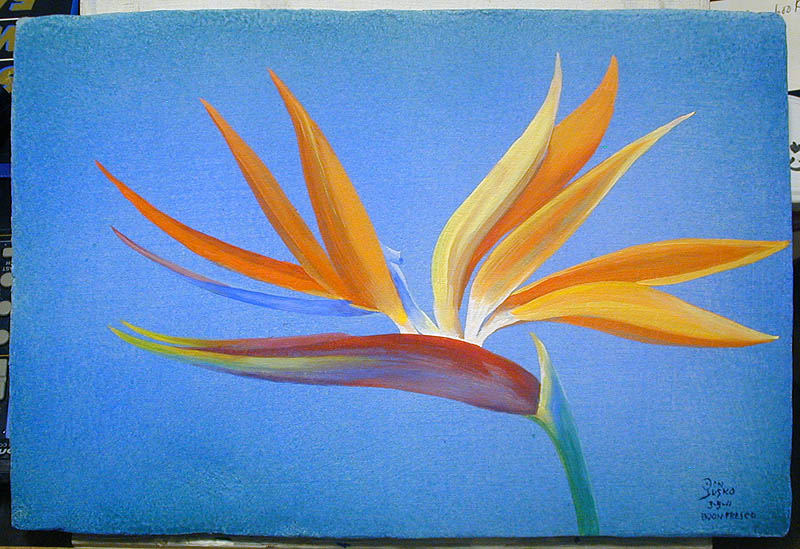
Board L, 02-29-04 L= 9x12.75, glue on board mortar applied on wet glue in the center, glue in mortar, large sand and small sand, 1:2. 11:20, 1/8 inch intonaco on board L. Binder in mortar. Not too wet, not too dry.
12:45, I'm ready to paint, there is still a slight gloss on the surface, I'm a little concerned about that, especially since I'm going to be working on a 45 degree tilt. 2:20, still not up to the instant absorbing but doing well. I'm still painting on the background. 2:30, It's there! perfect absorption! still on the background silk. This is when the blending is the best. 4:15, still going very well. 4:30, intonaco still soft enough for my brush point to stick in the banana and leave a mark. 6:00, finished. That's about five hours painting. I really pushed it to the limit of time. The colors I used were, Titanium white, naples yellow, cadmium yellow, Cadmium orange, Thioindigoid red, quinacridone magenta, viridian, Thalo green, chromium green oxide, cobalt blue light, thalo blue, caput mortum. 9:00, it's cracking. I think it is because I sealed the base coat. The intonaco must have water to draw from. The next morning it came to me, the reason the Bird of Paradise fresco didn't crack and the Fruits did is because, I scrubbed the rough coat surface of one and not the other. The next day the cracking got much worst and the fresco seems to be following the path of John Portrait 2 which I also didn't scrub. The Bird of Paradise I scrubbed. 
Board O, 9:00, 8x12. 03-13-04, Intonaco test added to Board O with the base coat scrubbed like the Bird of Paradise fresco, which didn't crack. The new intonaco coat with 1 lime and one fine crushed limestone, has had large and medium sand added to it. 1:1:1.5. It's 1/8 of an inch thick, The base coat was hard scrubbed and adhesive/bonder painted on before the intonaco was applied, just like the Bird of Paradise. 2:10, start painting, 5 hours after laying the mortar. I just couldn't just let it dry as a test. Painting was different, there was a thin crust that had to be removed with the first stroke, then it painted alright. Thioindigoid red was decidedly better than cad red in application. 2:50, finished. I took out my trusty #9 Series 7, loaded it up and stroked. The white background fell like leafs in the wind. What the heck, I was ready to just let the board lay there and dry up. I could always scrub off the color if it cracked and add another layer of intonaco. I was fired up with abandon.. So it's finished, caput. Caput Mortum started this whole thing, it was used for the drawing.
11:00, no cracks! Scrubbing the rough coat was the answer!! Pity I had to lose two good frescoes. 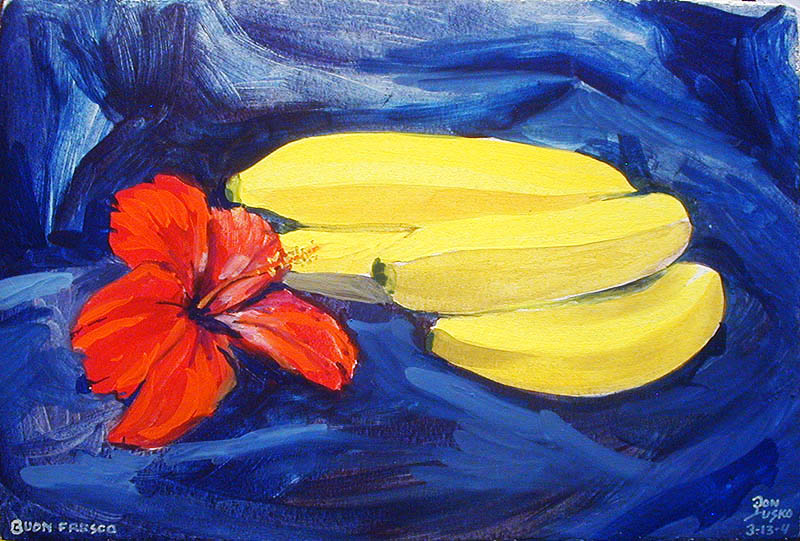 TIPS: Red lightens with orange not white. Use a coffee filter set in a tea strainer to filter the crud and crust out of your lime water. Use a porcelain flower palette, styrofoam egg carton or small cups for small amounts of lime water in for dipping your brush after you have cleaned a color out of it, use the cups to reload the brush before picking up more pigment. 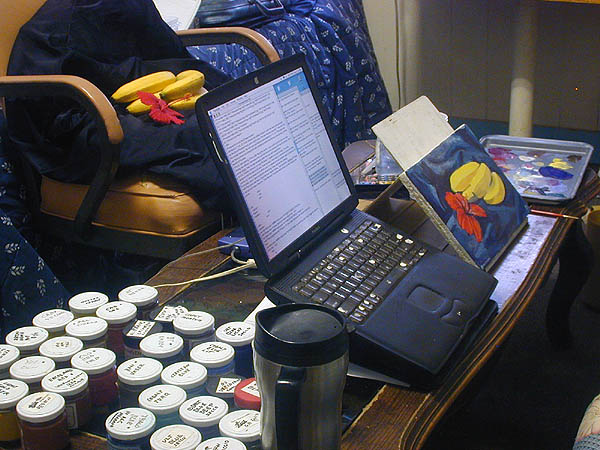 This is my painting and computer setup, I paint, I type, I paint. My van is set up to do it all, tomorrow I'm getting a cell phone with an internet connection. My first phone in 27 years. Next month at this time I should be in Upper New York starting a 4x7 foot mural. I am the Traveling Artist, FOB Maui, Hawaii.
3-16-04, Yesterday evening at 6:30 PM, I laid a 1/4 inch top coat of 1:1 lime and small grit sand on a soaked, fired tile, called Board Tile #1. The tile was sealed on five sides with a water based polyurethane, the same varnish used to finish my acrylic paintings. The sixth side would get my rough coat.
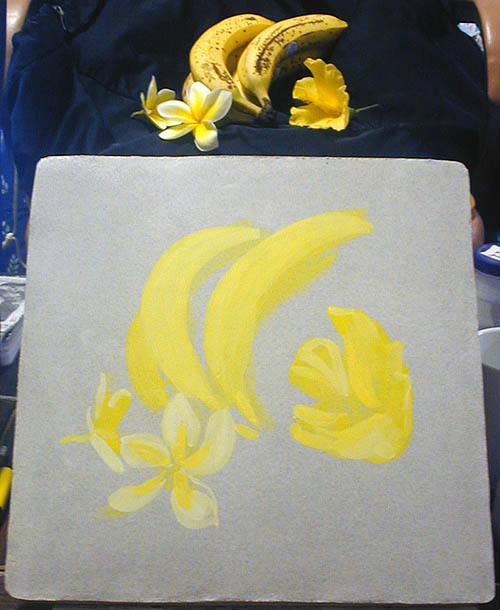 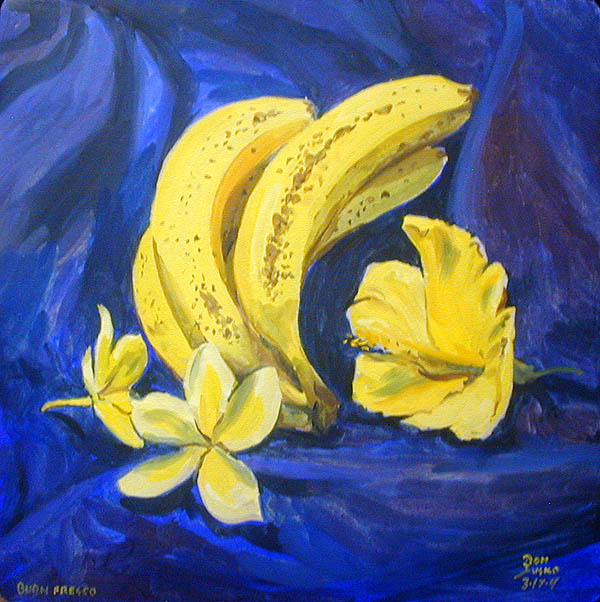 |

